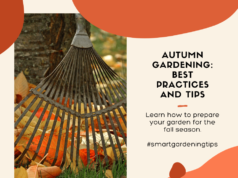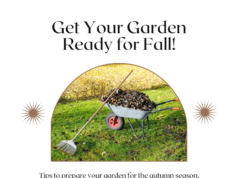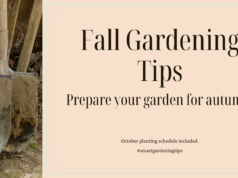
Welcome to our guide on preparing your garden for the autumn season. As the leaves start turning and the temperatures begin to drop, it’s important to take some proactive steps to ensure your garden remains healthy and vibrant throughout the colder months. In this article, we will provide you with essential tips and techniques to get your garden ready for autumn and maintain its beauty and productivity.
Key Takeaways:
- Cleaning and clearing your garden of debris and dead plants is an essential first step in preparing for autumn.
- Proper pruning and trimming of shrubs and trees help maintain their health and appearance.
- Protecting sensitive plants and garden structures from harsh weather conditions is crucial.
- Caring for soil health and adding nutrients through compost and mulch improves plant growth.
- Maintaining your lawn by mowing, aerating, and treating any issues ensures a healthy and vibrant green space.
Cleaning and Clearing: Getting Rid of Debris and Dead Plants
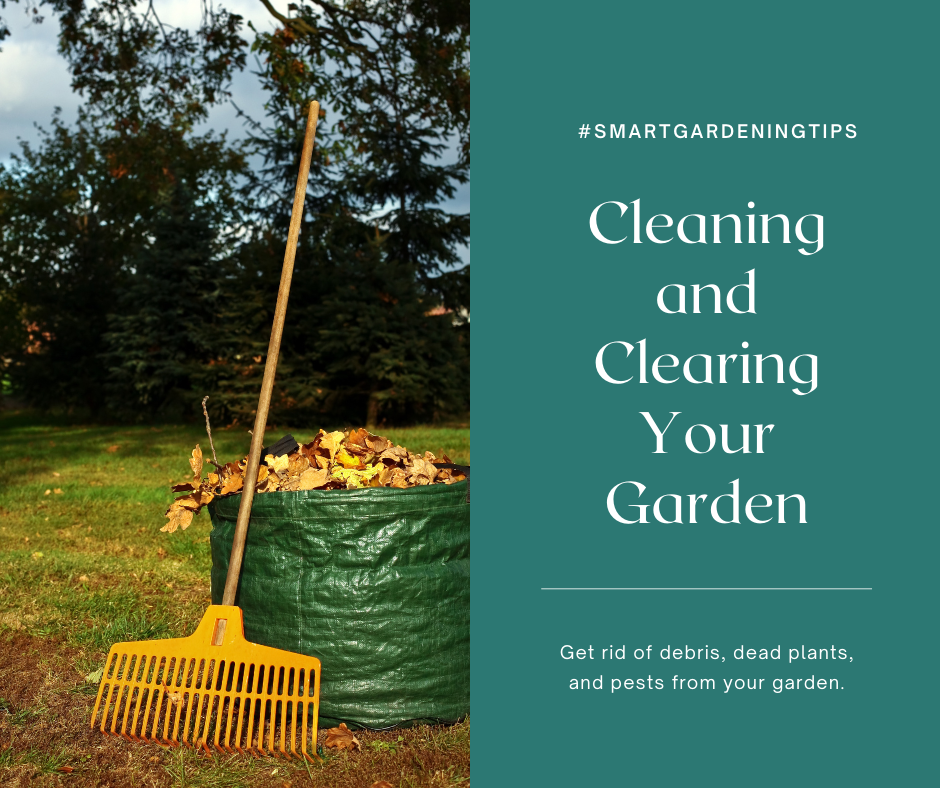
Before you embark on preparing your garden for autumn, the first step is to ensure a clean and debris-free outdoor space. Cleaning and clearing out debris and dead plants is essential to create a fresh start for the new season.
Cleaning and clearing your garden not only improves its appearance but also eliminates potential breeding grounds for pests and diseases. By removing accumulated debris, you pave the way for healthier and more vibrant plants.
To effectively clear out your garden and create a clean slate for the new season, follow these steps:
Step 1: Assess the Debris
Begin by surveying your garden and identifying any debris or dead plants that need to be removed. This may include fallen leaves, branches, weeds, and other organic matter.
Step 2: Gather the Necessary Tools
Equip yourself with the appropriate tools for the job. These may include a rake, garden gloves, pruning shears, and a wheelbarrow or garbage bags for disposal.
Step 3: Clear Out Debris
Start by raking up fallen leaves and collecting them in a pile. If there are dead plants or stems, prune them back to the healthy parts or remove them entirely. Be sure to dispose of the debris properly.
Tip: Consider creating a compost pile for organic debris that can be converted into nutrient-rich compost for your garden.
Step 4: Weed Control
Take the opportunity to pull out any weeds or unwanted plants that have taken root in your garden. By clearing out these invaders, you create more space and resources for your desired plants to thrive.
Step 5: Mulch Application
Once the debris is cleared and the weeds are removed, consider applying a layer of mulch to your garden beds. Mulch helps suppress weed growth, retain moisture, and insulate the soil during colder months.
Tip: Use organic mulch such as wood chips or shredded leaves for a natural and sustainable option.
Step 6: Garden Maintenance
While cleaning and clearing your garden, take the opportunity to inspect and maintain your garden structures, such as trellises or fences. Make any needed repairs or replacements to ensure they are in good condition for the autumn season.
By following these steps, you can effectively clean and clear your garden, removing debris and dead plants while creating an optimal environment for your plants to thrive in the autumn season.
Plant Care: Pruning and Trimming Shrubs and Trees
Proper plant care, including pruning and trimming shrubs and trees, is essential for maintaining their health, appearance, and longevity. Pruning and trimming serve multiple purposes, such as controlling growth, improving air circulation, promoting fruit production, and enhancing overall aesthetic appeal.
When it comes to pruning and trimming, it’s important to follow best practices to avoid damaging your plants and ensure optimal results. Here are some guidelines to help you with plant care:
1. Prune at the Right Time
Timing is crucial when it comes to pruning and trimming. Different plants have varying pruning requirements, so it’s essential to understand the specific needs of each species in your garden. Some shrubs and trees are best pruned during their dormant season, while others require pruning immediately after flowering. Research the appropriate pruning times for your specific plants to avoid interfering with their natural growth cycles.
2. Use the Right Tools
Investing in high-quality pruning tools is essential for achieving clean and precise cuts. Make sure your tools are sharp and properly sanitized to prevent the spread of diseases between plants. Depending on the size and type of shrubs and trees you’re pruning, you may need a combination of pruning shears, loppers, and pruning saws for different tasks.
3. Remove Dead or Diseased Wood

Regularly inspect your plants for dead, broken, or diseased branches. Pruning these branches not only improves the appearance of your plants but also prevents the spread of diseases and protects the overall health of your shrubs and trees. Remember to make clean cuts just above the branch collar (the swollen area at the base of the branch) to promote quick healing and minimize the risk of further damage.
4. Consider Shape and Structure
Pruning and trimming can help maintain the desired shape and structure of your shrubs and trees. Whether you’re aiming for a natural, informal look or a more formal, manicured appearance, strategic pruning can help you achieve the desired aesthetic. Consider the natural growth habit of the plant and prune accordingly to maintain a balanced shape and eliminate any crossing, rubbing, or inward-growing branches.
5. Don’t Over prune
While pruning is important, it’s crucial not to overdo it. Over pruning can weaken plants and make them more susceptible to pests, diseases, and environmental stress. Follow the principle of minimal pruning, only removing what is necessary to maintain plant health, shape, and overall appearance. Avoid indiscriminate pruning that can harm the long-term health and vigor of your shrubs and trees.
By following these best practices for pruning and trimming, you can ensure that your shrubs and trees remain healthy, beautiful, and well-maintained throughout the colder months. Incorporating proper plant care into your gardening routine will help you create a vibrant and thriving outdoor space.
| Pruning Shrubs | Trimming Trees | |
|---|---|---|
| When to prune? | Dead of winter or early spring | Winter or early spring before budding |
| What to look for? | Dead, diseased, or damaged branches | Overgrown branches, crossing branches, and limbs that pose a safety hazard |
| How much to prune? | Generally, less is more. Avoid excessive pruning. | Remove no more than 25% of the tree’s total leaf-bearing crown. |
| Pruning techniques | Use proper pruning shears and cut at a 45-degree angle just above the bud. | Use appropriate pruning tools for larger branches and always make clean cuts. |
| Pruning goal | Maintain the shrub’s shape, remove deadwood, and stimulate new growth. | Improve tree structure, control size, and maintain overall health. |
Preparing Plants for Colder Weather
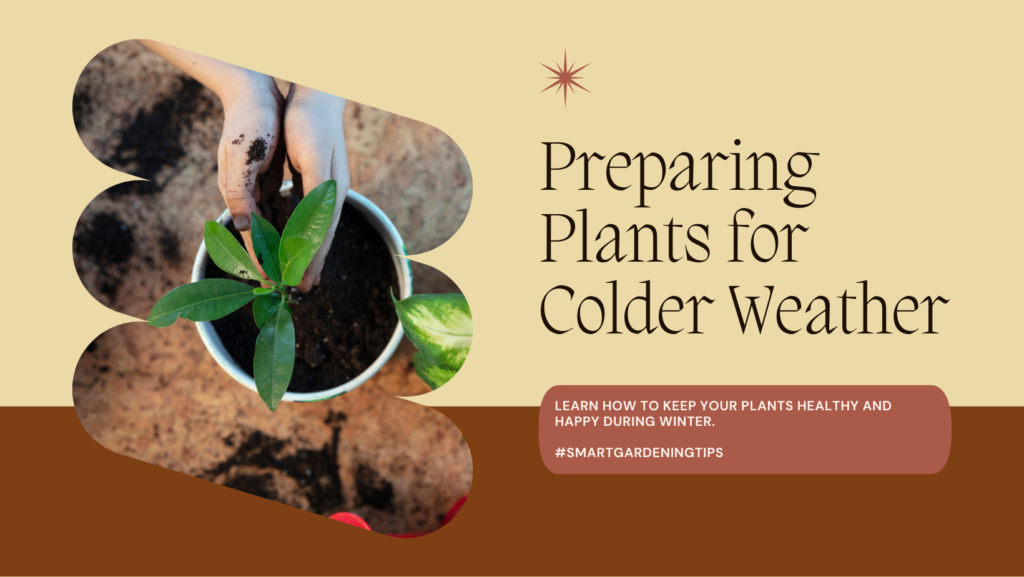
As the temperatures begin to drop and the autumn season sets in, it’s crucial to take the necessary steps to prepare your plants for the colder weather ahead. By providing proper care and protection, you can help your plants thrive and survive during this challenging time.
Here are some essential tips to help you prepare your plants for colder weather:
- Inspect and Clean: Before the colder weather arrives, it’s important to inspect your plants for any signs of pests or diseases. Remove any damaged or dead parts, such as leaves or branches, to prevent the spread of infection.
- Watering: Adjust your watering routine as the temperatures drop. While plants may require less water during colder weather, it’s important to ensure they receive enough moisture to survive. Monitor the soil moisture levels and water accordingly.
- Fertilize: Provide your plants with a balanced fertilizer to help strengthen their roots and promote healthy growth. The cooler temperatures can slow down nutrient uptake, so applying fertilizer before winter can provide them with the necessary nutrients to withstand the cold.
- Apply Mulch: Adding a layer of mulch around the base of your plants can help insulate the soil, regulate temperature, and retain moisture. Use organic materials like straw, wood chips, or shredded leaves.
- Create Windbreaks: Strong winds can damage delicate plants. Consider creating windbreaks using fences, trellises, or planting larger shrubs or trees as natural wind barriers.
- Protect from Frost: Keep an eye on the weather forecast and protect your plants from frost if necessary. Covering them with frost blankets, old bed sheets, or plastic can help prevent damage caused by freezing temperatures.
“Taking the time to prepare your plants for colder weather can make a significant difference in their survival and overall health. By following these simple tips, you can ensure that your plants are well-equipped to withstand the challenges of autumn.”
Recommended Plants for Autumn:
| Plant | Hardiness Zone | Recommended Care |
|---|---|---|
| Roses | Zone 3-11 | Prune lightly and apply winterizing rose fertilizer. |
| Lavender | Zone 5-9 | Trim back after flowering and add a layer of mulch for insulation. |
| Chrysanthemums | Zone 3-9 | Pinch back stems in late spring and apply a layer of mulch for winter protection. |
| Pansies | Zone 6-10 | Remove dead flowers regularly and cover with mulch during colder spells. |
Soil and Compost: Checking Soil Health and Adding Nutrients

Healthy soil is vital for nurturing a thriving garden. By checking your soil’s health, adjusting pH levels, and adding compost and mulch to your garden beds, you can enhance the nutrient content and moisture retention of your soil. Here’s a step-by-step guide to help you optimize your soil and create the ideal growing conditions for your plants.
Checking Soil Health
Before making any amendments, it’s important to assess the health of your soil. The following are simple methods to determine soil health:
- Perform a visual inspection: Check for signs of compaction, erosion, or nutrient deficiencies.
- Conduct a soil texture test: Squeeze a handful of soil. If it forms a tight ball, it likely has a high clay content. If it crumbles easily, it may be sandy. Loamy soil will hold its shape but break apart with gentle pressure.
- Use a soil pH test: Purchase a soil testing kit or send samples to a lab to determine the soil’s acidity or alkalinity levels.
Adjusting pH Levels
The pH level of your soil plays a critical role in nutrient availability to plants. Most garden plants thrive in slightly acidic to neutral soil, with a pH range of 6.0 to 7.0. To adjust pH levels:
- If the soil is too acidic (pH below 6.0), add lime to raise the pH.
- If the soil is too alkaline (pH above 7.0), add sulfur or acidic organic matter, such as compost, to lower the pH.
Adding Compost and Mulch
Compost and mulch are essential for enriching the soil and promoting healthy plant growth. Here’s how to incorporate them into your garden beds:
- Adding compost: Spread a layer of compost evenly over the soil surface to improve its nutrient content. Mix the compost into the top few inches of soil using a garden fork or tiller.
- Applying mulch: After planting, apply a layer of mulch around the base of your plants. Mulch helps retain moisture, suppress weeds, and regulate soil temperature.
| Types of Compost | Benefits |
|---|---|
| Veggie and fruit scraps | Rich in nutrients and can boost plant growth. |
| Leaf compost | Improves soil structure, retains moisture, and adds organic matter. |
| Manure compost | Enhances soil fertility and enriches nutrient content. |
“Healthy soil leads to healthy plants, and compost is the key ingredient for building and maintaining soil health.” – Gardening expert
By regularly checking your soil health, adjusting pH levels, and adding compost and mulch, you can ensure optimal growing conditions for your garden. These practices promote nutrient-rich soil, strong plant growth, and thriving gardens throughout the autumn season.
Lawn Maintenance: Mowing, Aerating, and Treating Issues
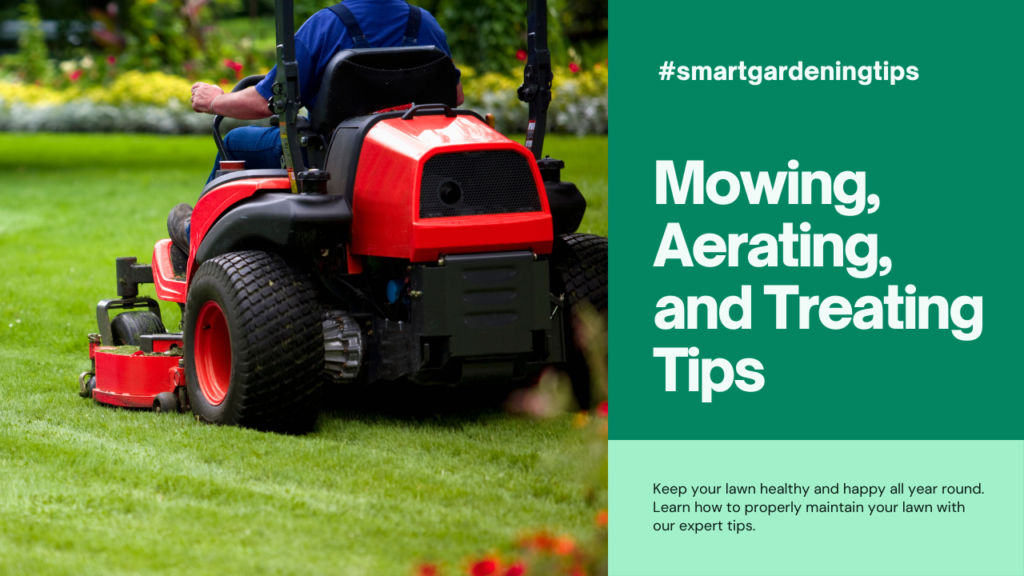
As the autumn season approaches, it’s important to give your lawn the attention it needs to stay healthy and vibrant. Proper lawn maintenance involves a combination of mowing, aerating, and treating any issues that may arise. By following these tips, you can ensure that your lawn remains in top condition throughout the season.
Mowing
Regular mowing is a crucial part of lawn maintenance. Aim to keep your grass at a height of about 2-3 inches during the autumn months. This height allows for optimal nutrient absorption and helps to prevent weed growth. Remember to always mow with a sharp blade to achieve a clean cut and avoid damaging the grass.
Aerating
Aerating your lawn helps to improve soil compaction and allows oxygen, water, and nutrients to reach the grass roots more effectively. Use a lawn aerator or hire a professional to help with this process. Autumn is an ideal time for aeration as it promotes strong root growth before the dormant winter period.
Treating Issues
During the autumn season, your lawn may encounter various issues such as pests, diseases, or nutrient deficiencies. It’s important to identify and address these issues promptly to prevent further damage. Regularly inspect your lawn for signs of pests or diseases, and treat them accordingly. Additionally, consider fertilizing your lawn with a balanced fertilizer to provide the necessary nutrients for healthy growth.
“Proper lawn maintenance involves a combination of mowing, aerating, and treating any issues that may arise.”
By implementing these lawn maintenance practices, you can ensure that your lawn remains healthy, green, and beautiful throughout the autumn season. Remember to adjust your lawn care routine based on your specific grass type and consult with lawn care professionals if needed. Happy lawn maintaining!
Protecting Your Garden: Covering and Wrapping Sensitive Plants
Certain plants in your garden are more vulnerable to the colder temperatures that come with autumn. To ensure their survival, it’s essential to provide them with extra protection. In this section, we will discuss effective methods for covering and wrapping your sensitive plants, safeguarding them from frost and harsh weather.
- Assess plant sensitivity: Before implementing any protective measures, identify the plants in your garden that are prone to damage from cold temperatures. These may include delicate flowers, tropical plants, or frost-sensitive herbs.
- Choose appropriate covers: Select the most suitable protective covers based on the size and shape of your plants. Options include frost blankets, burlap, old bedsheets, or even plastic wrap. Ensure the covers allow enough airflow while providing insulation.
- Wrap plants carefully: Gently wrap the cover around your plants, taking care not to damage any foliage or branches. Secure the cover in place using stakes or clips, ensuring it remains snug but not too tight. This will prevent wind from dislodging the covers.
- Monitor weather conditions: Stay informed about upcoming weather patterns, especially nights when frost or freezing temperatures are expected. During such periods, cover your plants in the evening and remove the covers during the day to allow sunlight and air circulation.
- Insulate plants further: If you anticipate extremely cold temperatures, consider creating an additional layer of insulation. Surround your plants with mulch, straw, or dried leaves to provide extra warmth and protection.
By taking these protective measures, you can shield your delicate plants from the harsh effects of autumn weather. Remember to check the covers regularly and adjust as needed to ensure your plants receive the right balance of protection and airflow.
Remember, each plant has different sensitivity levels to cold temperatures. Not all plants require covering or wrapping. It’s important to research and understand the specific needs of each plant in your garden to provide appropriate protection.
| Plant | Sensitivity Level |
|---|---|
| Rosemary | High |
| Lavender | Medium |
| Marigold | Low |
Preparing Garden Structures for Autumn Weather
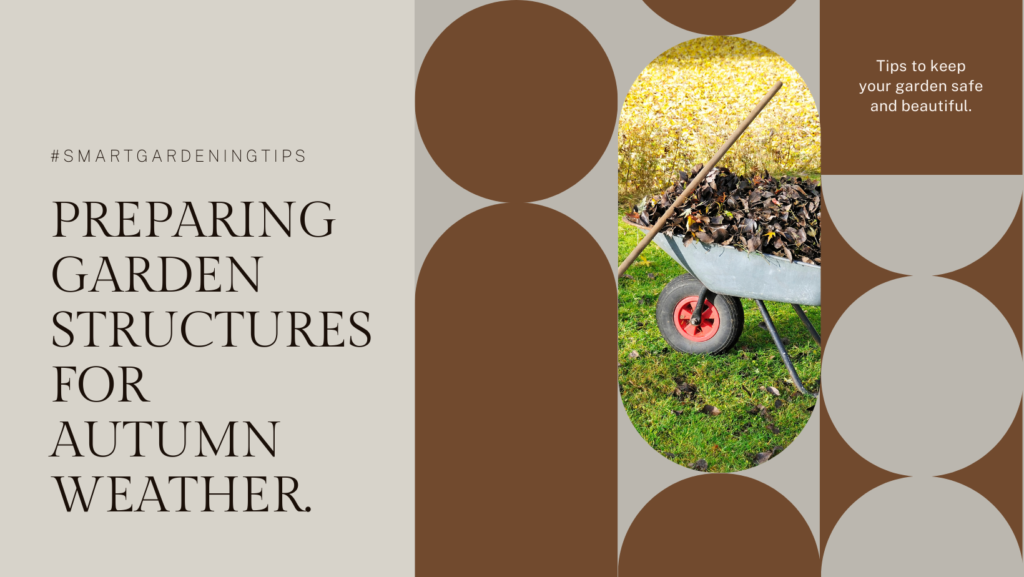
As the autumn season approaches, it’s not just your plants that need preparation – your garden structures require attention too. Trellises, supports, and other structures play a vital role in keeping your garden organized and beautiful. To ensure their longevity and functionality, it’s essential to take steps to protect and prepare them for the changing weather conditions. Here are some tips to help you prepare your garden structures for autumn weather.
1. Clear and Clean
Start by clearing any debris or fallen leaves from your garden structures. Leaves and dirt can accumulate and cause moisture buildup, leading to rot and damage. Use a broom or a brush to gently sweep away any dirt or debris from the surfaces and corners of your structures. For wooden structures, check for any signs of rot or decay and address them promptly.
2. Check for Damage
Inspect your garden structures for any signs of damage or wear and tear. Look for cracks, loose screws, or any structural weaknesses that need to be addressed. Repair or replace any damaged parts to ensure the stability and safety of your structures.
3. Coat with Protective Finish
To safeguard your garden structures against the harsh autumn weather, consider applying a protective finish. A weather-resistant sealant, stain, or paint can help protect wooden structures from moisture, rot, and decay. Before applying any finish, make sure the surfaces are clean and dry to ensure maximum adhesion and effectiveness.
4. Secure and Stabilize
As autumn brings strong winds and storms, it’s important to secure your garden structures to prevent them from toppling over or getting damaged. Use stakes or anchors to secure trellises, arches, and other lightweight structures to the ground. For larger or heavier structures, such as pergolas or gazebos, check the stability of their foundations and make any necessary adjustments or repairs.
5. Remove and Store
If you have any collapsible or removable garden structures, such as temporary trellises or arbors, consider removing and storing them during the winter months. This will protect them from potential damage caused by snow, ice, and freezing temperatures. Clean and dry the structures thoroughly before storage to prevent mold or mildew growth.
By following these tips, you can ensure that your garden structures are well-prepared for the autumn weather and will continue to enhance the beauty and functionality of your garden throughout the season.
FAQ
Q. How do I clear out debris and dead plants from my garden?
A. To clear out debris and remove dead plants from your garden, start by raking up any fallen leaves, branches, and other debris. Prune and trim any dead or damaged plants, removing them entirely if necessary. Dispose of the debris in your compost pile or green waste bin.
Q. When is the best time to prune and trim shrubs and trees?
A. The best time to prune and trim shrubs and trees is in the late winter or early spring, before new growth emerges. However, for minor shaping or removal of dead branches, you can also do light pruning in the autumn.
Q. How can I protect my plants from the colder weather?
A. To protect your plants from the colder weather, consider covering them with burlap or frost blankets. You can also wrap sensitive plants, such as delicate roses or tropical plants, in bubble wrap or straw. Mulching around the base of your plants can help insulate the soil and retain heat.
Q. How can I improve the health of my garden soil?
A. To improve the health of your garden soil, start by testing the pH levels and adjusting them if needed. Add organic matter, such as compost or well-rotted manure, to enrich the soil with nutrients. Apply a layer of mulch to help retain moisture and prevent weeds from growing.
Q. How often should I mow and aerate my lawn in autumn?
A. In autumn, you should continue to mow your lawn regularly, but at a slightly higher cutting height to promote root growth. Aerate your lawn once a year in autumn to improve soil compaction and allow air, water, and nutrients to reach the root zone.
Q. How do I protect my garden structures from autumn weather?
A. To protect your garden structures from autumn weather, inspect them for any signs of damage or weakness. Repair or reinforce them as needed. Consider covering delicate structures with tarps or storing them in a sheltered area if possible.
Q. What are the essential steps to prepare my garden for autumn?
A. The essential steps to prepare your garden for autumn include cleaning out debris and dead plants, pruning and trimming shrubs and trees, protecting plants from the colder weather, improving soil health with compost and mulch, maintaining your lawn, and protecting garden structures.
Conclusion
Congratulations! You are now equipped with the essential knowledge to prepare your garden for the autumn season. By following these tips and steps, you can ensure that your garden remains vibrant and thriving throughout the colder months.
Start by clearing out any debris and removing dead plants to create a clean space for the new season. Take care of your shrubs and trees by pruning and trimming them properly. Protect delicate plants from the colder weather by covering and wrapping them, and prepare your garden structures for the changing weather conditions.
Don’t forget to check your soil health, adjust pH levels, and add compost and mulch to improve the nutrient content and moisture retention of your garden beds. Lastly, pay attention to lawn maintenance by mowing, aerating, and treating any issues that may arise.
By taking these measures, you can embrace the fall season and enjoy a beautiful autumn garden that will bring you joy throughout the season. Get ready to witness the changing colors of nature and create a welcoming and cozy outdoor space for you and your loved ones to enjoy.


